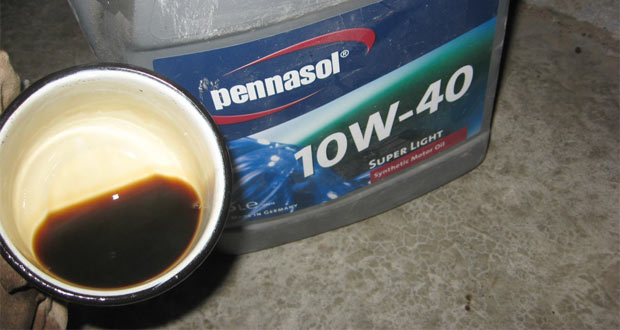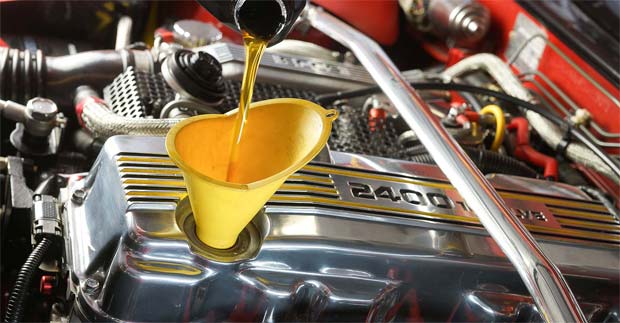
At what temperature does engine oil boil?
Flash point of engine oil
Let's start considering this issue from the minimum temperature for the three concepts listed in the first paragraph and we will expand them in ascending order. Since in the case of motor oils, it is unlikely that it will be possible to logically understand which of the limits comes first.
When the temperature reaches approximately 210-240 degrees (depending on the quality of the base and the additive package), a flash point of engine oil is noted. Moreover, the word "flash" means the short-term appearance of a flame without subsequent combustion.
The ignition temperature is determined by the method of heating in an open crucible. To do this, the oil is poured into a measuring metal bowl and heated without the use of an open flame (for example, on an electric stove). When the temperature is reached close to the expected flash point, an open flame source (usually a gas burner) is introduced for each rise of 1 degree above the surface of the crucible with oil. If the oil vapors do not flash, the crucible warms up by another 1 degree. And so on until the first flash is formed.


The combustion temperature is noted at such a mark on the thermometer, when the oil vapors do not just flare up once, but continue to burn. That is, when the oil is heated, combustible vapors are released with such intensity that the flame on the surface of the crucible does not go out. On average, a similar phenomenon is observed 10-20 degrees after reaching the flash point.
To describe the performance properties of engine oil, only the flash point is usually noted. Since in real conditions the combustion temperature is almost never reached. At least in the sense when it comes to an open, large-scale flame.


Boiling point of engine oil
The oil boils at a temperature of about 270-300 degrees. Boils in the traditional concept, that is, with the release of gas bubbles. Again, this phenomenon is extremely rare on the scale of the entire volume of the lubricant. In the sump, the oil will never reach this temperature, as the engine will fail long before even reaching 200 degrees.
Usually small accumulations of oil boil in the hottest parts of the engine and in case of obvious malfunctions in the internal combustion engine. For example, in the cylinder head in the cavities close to the exhaust valves in case of malfunction of the gas distribution mechanism.
This phenomenon has an extremely negative effect on the working properties of the lubricant. In parallel, sludge, soot or oily deposits are formed. Which, in turn, contaminate the motor and can cause clogging of the oil intake or lubrication channels.


At the molecular level, active transformations take place in the oil already when the flash point is reached. First, light fractions are evaporated from the oil. These are not only base elements, but also filler components. Which by itself changes the properties of the lubricant. And not always for the better. Secondly, the oxidation process is significantly accelerated. And oxides in engine oil are useless and even harmful ballast. Thirdly, the process of burning out the lubricant in the engine cylinders is accelerated, since the oil is highly liquefied and penetrates into the combustion chambers in greater quantities.
All this ultimately affects the resource of the motor. Therefore, in order not to bring the oil to a boil and not to repair the engine, it is necessary to carefully monitor the temperature. In the event of a cooling system failure or obvious signs of oil overheating (abundant sludge formation under the valve cover and in the sump, accelerated lubricant consumption for waste, the smell of burnt oil products during engine operation), it is advisable to diagnose and eliminate the cause of the problem.


Watch this video on YouTube